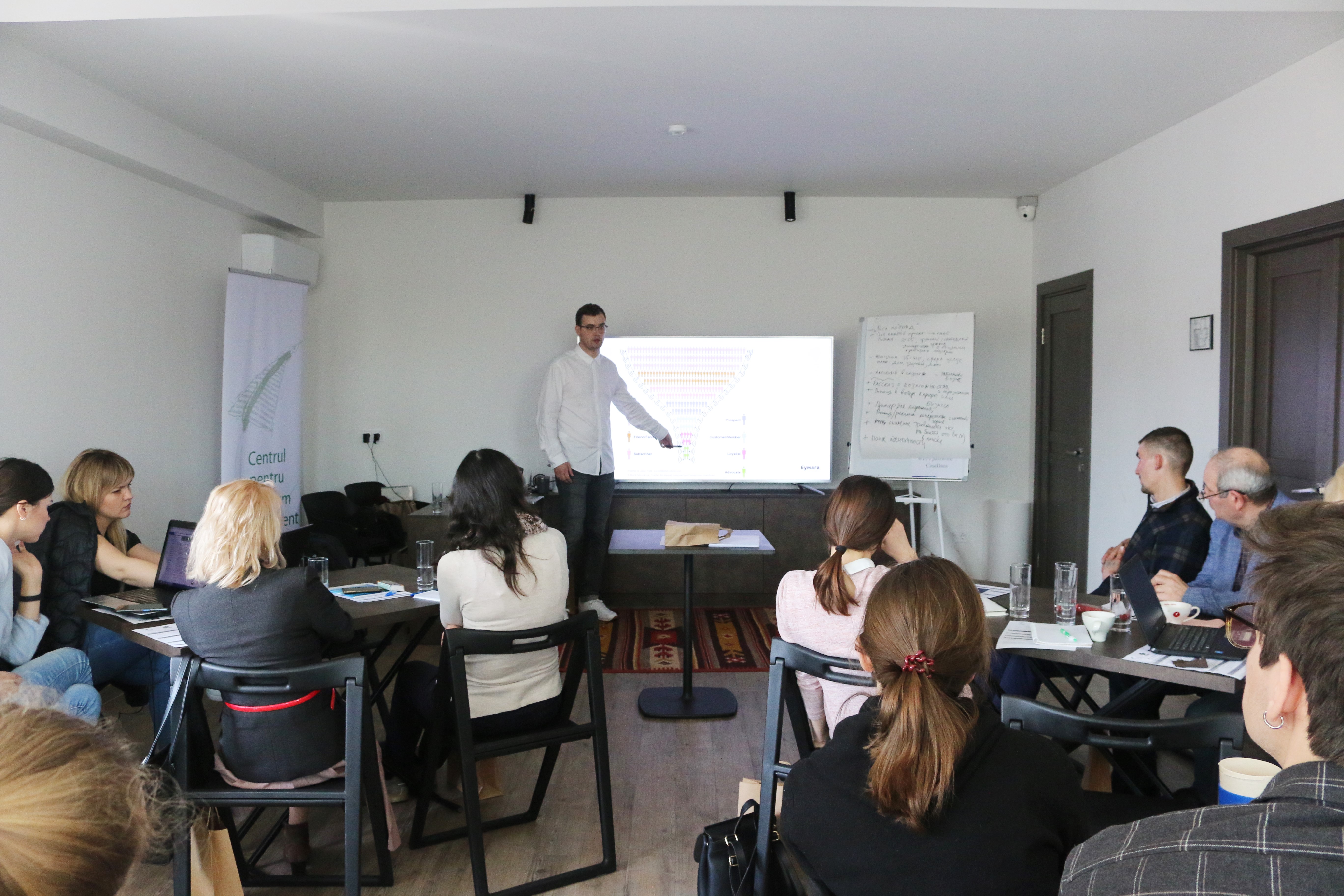
The co-founder of ‘Бумага’ media outlet from Saint Petersburg, Kirill Artemenko, was the expert tackling these subjects during the training organized by the Independent Journalism Center on 13-14 March 2020.
Founded in 2012, ‘Бумага’ has 32 employees, 112,000 followers on social media, a subscriber address database of 35,000 individuals and an income of EUR 500,000 for the 2019 year, including 40% from native advertising.
During the two-day training, the participants discussed about the power of media outlets, including of local ones, how important the quality of the editorial content is in strengthening and keeping a loyal audience, about the most important dissemination platforms in reaching as many readers as possible or about the different monetization strategies that could help media outlets. Also, the participants learned to analyze their audience and develop their profile in order to better understand the information needs of their public.
The expert emphasized that at present, in order to keep the interest of their audience, media outlets should be more creative and ingenious, organizing events for every category and setting up partnerships with private companies. At the same time, the projects and initiatives they launch should always respect the core mission of the outlet.
“The mission of ‘Бумага’ portal is to make the readers of Sankt Petersburg not feel alone in a big city. Therefore, all the activities and projects we launch have to meet this mission. Otherwise, we have convinced ourselves that they are useless. When creating a product, whether it is a series of articles or a number of events, one has to consider its audience first”, the journalist believes.
Discussions also focused on how Google Analytics tool works, how the data about the online audience are stored and provided, what the key performance indicators of a media website are and how to use analytic data for daily and future planning.
Also, during the training, the journalists learned from Ina Grejdeanu, Strategic Development Director at IJC, how to ‘pack’ their project ideas so that they have a greater impact on the audience. “Projects are not about money or resources used over a certain period of time, but about opportunities that can encourage beginnings or generate solutions during difficult times. As we know, the media from our country, whether we want it or not, faces such concerns. A well-written project opens doors, particularly for those who want to remain honest and do their job well, without deviations and compromises. That’s why some knowledge about how to write projects is always useful”, she said.
Until the 22nd of March, these 10 media outlets are to send their detailed project proposals. The jury will select four outlets that will receive 5,000 EUR in grants to implement online audience development initiatives during a seven-month period (1 April – 31 October 2020).
Alongside their activities, the media partners will benefit from in-house consultations with the participation of two international experts and one local expert in areas such as audience analysis (Google Analytics, YouTube Analytics, etc.), content production planning, advertising sales and online monetization.
The ‘Understanding Audience Through Digital Assistance’ Project is implemented by the IJC with the support of Internews and funded by Sweden. The project aims at improving the quality of media content and the financial sustainability of media outlets through a better understanding of the needs of the public.













